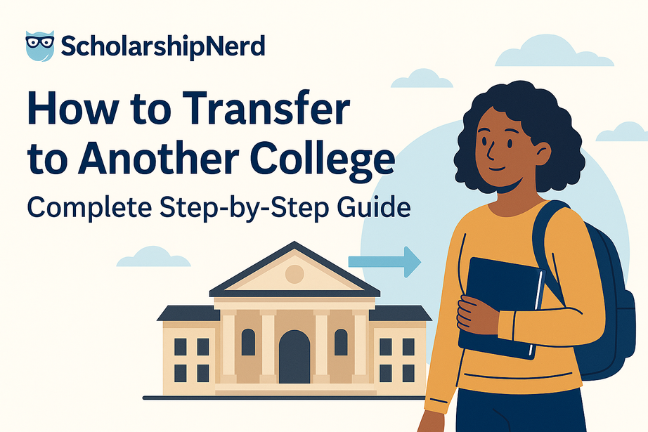Paying for college can feel overwhelming, but it doesn't have to be. Whether you're a high school senior, a parent, or already in college, understanding your options can make tuition feel far more manageable. The truth is, there's no single magic source of funding.
The best way to pay for college tuition is to combine multiple verified strategies: start with FAFSA for grants and loans, apply for scholarships, explore work-study programs, and use tuition payment plans or savings accounts.
Let's walk through seven proven strategies to make college more affordable.
1. Start With FAFSA: The Gateway to Financial Aid
If you only take one step after reading this guide, make it completing your FAFSA. The Free Application for Federal Student Aid is your entry point to nearly every form of college financial support. When you submit it, you unlock access to grants, loans, and work-study programs.
Filling out the FAFSA might seem intimidating, but it’s more straightforward than most people expect. You’ll be asked to provide details about your family’s income, taxes, and assets. Then the Department of Education uses that data to calculate your Expected Family Contribution (EFC). Schools then use your FAFSA results to build your personalized aid package.
Be sure to file your FAFSA early each year as some aid runs out quickly. Always double-check for common errors like missing signatures or outdated tax information. Submitting early with accurate information ensures you won’t miss out on valuable grants or work-study opportunities.
Key Takeaway: FAFSA determines your eligibility for grants, loans, and work-study funding opportunities. Submit your FAFSA online each year with accurate family financial information. Schools will use this to calculate your total aid package.
2. Apply for Grants and Scholarships (Free Money You Don't Repay)
After completing your FAFSA, your next step should be to hunt for free money. Grants and scholarships are both forms of financial aid that don’t have to be repaid, but they come from different sources and have different eligibility rules.
Grants are typically need-based and are often awarded by federal or state governments. Scholarships, on the other hand, tend to reward academic performance, community involvement, or specific talents and interests. There are scholarships for almost every type of student like athletes, artists, first-generation students, and even left-handed learners.
To stay organized, create a simple spreadsheet to track application deadlines, requirements, and award amounts. You can find verified scholarships through trusted sources like ScholarshipNerd.org, which only lists legitimate, up-to-date opportunities.
Key Takeaway: Scholarships are based on merit; grants are based on need. Applying for both helps reduce tuition costs without taking on debt.
3. Consider Federal Work-Study Programs
Working part-time while in college can be more than just a paycheck. It’s also an opportunity to build experience and reduce your reliance on loans. Federal Work-Study (FWS) programs are unique because they’re tied to your financial aid eligibility and designed to fit around your academic schedule.
Work-study jobs are usually on campus, such as in libraries, dining halls, or academic offices, and the earnings can go directly toward your tuition or everyday expenses. Beyond the financial help, these roles offer valuable professional experience that can strengthen your resume before graduation.
Students will earn at least the current federal minimum wage, but many jobs can pay more, especially for graduate students. Be sure to indicate your interest in work-study when you fill out your FAFSA. As with all college awards, funding is limited, and positions can fill up quickly.
Key Takeaway: Work-study programs let students earn money toward college expenses through part-time campus jobs, reducing reliance on loans.
4. Compare Federal and Private Student Loans (and Borrow Wisely)
If your grants, scholarships, and work-study earnings still leave a gap in covering tuition payments, student loans may be your next option. But not all loans are created equal. Federal student loans should almost always be your first choice because they have fixed, lower interest rates and flexible repayment options that private lenders can’t match.
Private loans, on the other hand, are issued by banks or other lenders and may come with variable interest rates and stricter repayment terms. These can be helpful for filling in small funding gaps, but they’re riskier for long-term borrowers.
Always read the fine print before taking out a loan. Borrow only what you truly need and know exactly when and how repayment begins.
Key Takeaway: Federal loans have fixed, lower rates and flexible repayment. Private loans often have variable rates and fewer borrower protections.
5. Use College Payment Plans and Tuition Assistance Programs
If taking on loans isn’t ideal, explore whether your school offers tuition payment plans. These plans allow you to spread your tuition payments out across the semester or year, helping you manage cash flow without accumulating interest.
Many employers also offer tuition assistance or reimbursement programs for employees continuing their education. If you’re working while studying, check your company’s policy. You might be eligible for thousands in annual support. Military families should also look into benefits through the GI Bill or branch-specific programs.
Even community or state programs can help cover costs for residents attending local schools. These small, local opportunities can add up and significantly reduce your total bill.
6. Tap Into Savings: 529 Plans and Other Smart Strategies
If you or your parents have been saving for college, now’s the time to make those funds work for you. A 529 plan is one of the best tools for this. It’s a tax-advantaged account specifically for education expenses, meaning contributions grow tax-free and withdrawals for qualified expenses aren’t taxed.
If you don’t already have a 529, it’s never too late to start one. Even small, consistent contributions can make a difference, especially when combined with other funding sources. Families who plan early often find that these savings cover more than they expected.
Key Takeaway: A 529 plan is a tax-free savings account for education. Families can withdraw funds for tuition and fees without paying federal tax.
7. Combine Strategies to Create Your Personal College Funding Plan
Now that you know the main ways to pay for college, it’s time to put them all together. The most successful students use a blend of free aid, part-time income, and responsible borrowing to cover their tuition.
For example, a student might combine $4,000 in FAFSA grants, $3,000 in scholarships, $2,000 in work-study earnings, and a $5,000 federal loan, along with $2,000 from savings or a payment plan. That mix can cover a year of tuition at many public colleges while keeping debt minimal.
The key is to start early, stay organized, and take advantage of every legitimate opportunity available.
Frequently Asked Questions
What are the best ways to pay for college without loans?
You can pay for college without loans by using free aid sources like FAFSA grants, verified scholarships, work-study, and employer tuition help. Combining these can eliminate the need to borrow.
How does FAFSA work for first-time applicants?
FAFSA determines your eligibility for federal grants, loans, and work-study. Submit it online annually using your financial information to receive your aid package.
Are scholarships better than grants?
Scholarships are usually merit-based, while grants depend on financial need. Applying for both increases your chances of reducing tuition debt.
What's the difference between federal and private student loans?
Federal loans offer fixed interest and repayment flexibility. Private loans vary by lender and typically have higher, changing rates.
What is a 529 college savings plan?
A 529 plan allows tax-free savings for education. Contributions grow tax-free, and withdrawals for qualified tuition aren't taxed.




